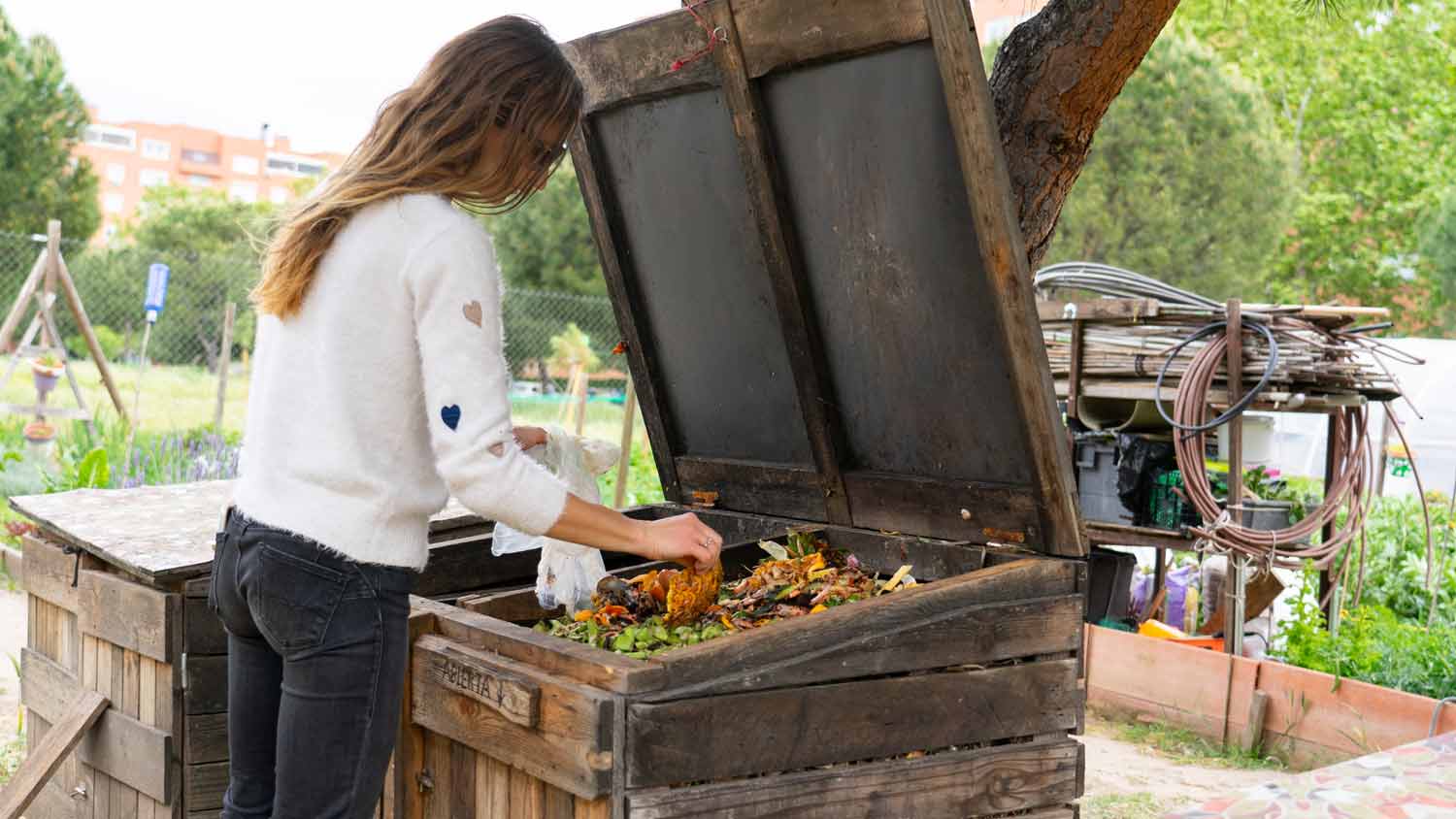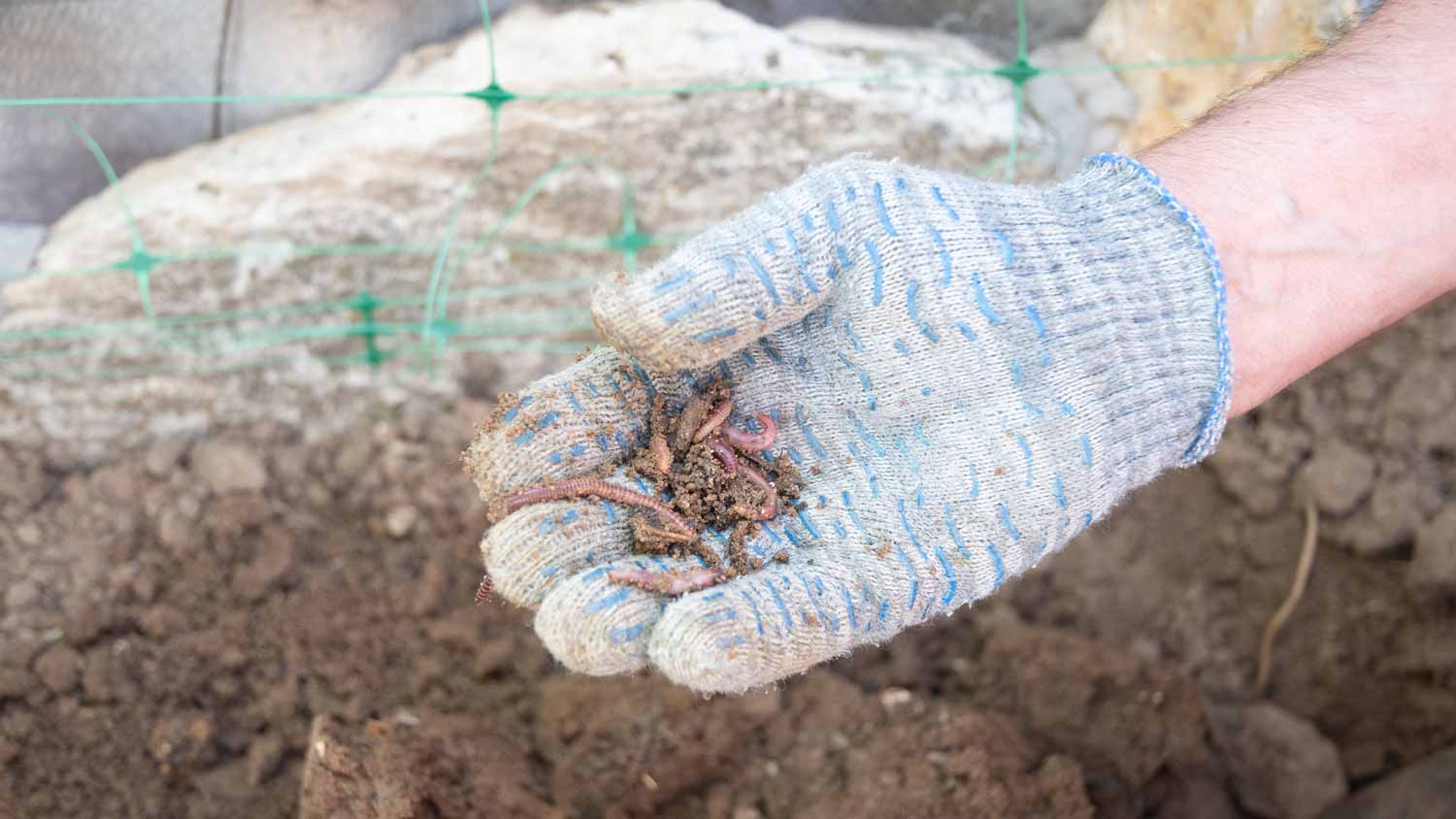
Mattresses are considered hazardous waste, so you’ll likely have to pay disposal fees. Use this guide on mattress removal costs to see what your total will be.
Your garden debris deserves better than a one-way trip to a landfill


Learning how to compost yard waste is a simple but powerful way to reduce green debris and improve your soil. Instead of bagging up leaves, grass clippings, and branches for landfill pickup, you can turn them into a valuable resource for your yard or garden. With the right setup and a little know-how, composting can become an easy, eco-friendly habit that pays off big for your home’s outdoor appeal.
Composting yard waste does more than clear your lawn; it gives organic materials a second life. When broken down, fallen leaves and trimmings become a natural soil booster, supporting healthier gardens and landscapes. Whether you're motivated by environmental benefits, local regulations, or a desire to reduce landfill waste, composting is a green and responsible solution.
Where you live often impacts the cost. Some metro areas, like New York City, offer a free curbside composting program. In areas without a public composting service, homeowners can turn to a yard cleaning service. These pros know how to manage and compost green waste properly. On average, yard clean-up costs range from $200 to $600, and they can remove other materials like boulders, stones, broken lawn equipment, and old sheds.
DIY composting costs very little, often under $100 or nothing at all, depending on the method. The most significant investment is your time and effort, but the payoff in reduced waste and rich compost for your garden might be well worth it.

To start composting, homeowners should choose a method that suits their yard and lifestyle.
Place your composting setup in an area with good drainage, partial shade, and easy access so you can add materials and turn the pile regularly. Also, stick to composting yard debris only. Mixing in food scraps or pet waste will lead to odors and attract pests.
Much of what you toss can be used, from fallen branches to garden trimmings. Below are several easy composting methods to consider.
A freestanding compost pile is one of the most straightforward and flexible ways to compost yard waste. It works best in roomy yards with plenty of organic material.
Choose a well-drained, out-of-the-way spot and start building your pile by alternating layers of brown materials, like dry leaves and twigs, with thinner layers of green materials, such as grass clippings and plant trimmings. Aim for more browns than greens to keep things balanced and odor-free.
Turn the pile every few weeks to introduce oxygen and help everything break down evenly. Keep it moist but not soaking wet; it should be slightly damp and covered with a tarp to avoid over-saturation from the rain or snow.
With regular attention, your compost should be ready in 2 to 4 months during warmer seasons or a bit longer in colder climates. You’ll know the process is complete when the materials turn dark and crumbly with an earthy smell.

Like a compost pile, a backyard compost bin turns yard waste into rich, usable compost. However, it has a tidier footprint and offers a little more control.
Bins help contain compost, retain heat and moisture more effectively, and discourage pests from poking around. They are also an excellent option for smaller yards or neighborhoods with aesthetic or space considerations.
Homeowners can buy a ready-made compost bin or build one using wood, wire mesh, cement blocks, or even repurposed materials, like an old, rustproof trash can. Some bins have open bottoms to allow contact with soil and helpful microbes, while others are fully enclosed.
If you opt for an enclosed version, look for one with ventilation or airflow panels to keep the decomposition process moving.
Place your bin in partial sun and chop up larger materials for faster results before adding them. In some instances, composting in a bin may take slightly longer than an open pile, usually 3 to 6 months, but it depends on the container method and proper management. Whatever the case, bins are a cleaner, more structured way to compost that many homeowners prefer.
A compost tumbler removes the mess and most of the muscle from the process. These enclosed, rotating bins are designed to make the process faster, cleaner, and more efficient, especially for those short on space or patience.
Unlike a compost pile or bin, a tumbler simplifies one of the most essential parts of composting: turning the pile. With just a few spins per week, it’ll mix and aerate your compost with minimal effort.
Tumblers maintain the right balance of air and moisture, which are necessary for speedy decomposition. The sealed design traps heat and keeps rain out while the rotation evenly distributes greens, browns, and microbes throughout the chamber. That consistency can cut down composting time dramatically; some tumblers produce usable compost in as little as three to four weeks under ideal conditions.
Trench composting is a fairly no-fuss method that requires only a shovel. Instead of managing a pile or container, you bury your yard waste in the ground and let nature take care of the rest. It is an easy, low-visibility way to eliminate leaves, grass clippings, and garden debris while enriching the soil.
Dig a trench 12 to 18 inches deep in an unused section of your yard or garden. Add yard waste, avoiding anything diseased or including seeds, especially from weeds. Next, cover it all with the soil you removed. As the buried material breaks down, it slowly releases nutrients and improves soil texture and water retention without turning or other types of maintenance.
Decomposition can take longer than other methods, especially with larger or tougher materials. Trench composting is a great way to remove yard waste, and it’s ideal for off-season cleanups or when prepping beds for next season’s planting.

Worm composting, or vermicomposting, is an eco-friendly way to break down certain types of yard waste. But don’t expect the worms to handle everything you throw at them.
Red wigglers, the most common composting worms, thrive on soft, moist organic matter but struggle with tough, woody debris. Grass clippings, smooth leaves, and tender plant trimmings are fair game for them, while sticks, thick stems, and branches are best for other composting methods.
Moderation is key to keeping your worm bin happy and productive. To balance moisture and carbon content, mix soft yard waste in thin layers with brown materials like shredded paper or dry leaves.
Grass clippings, in particular, should be aged or pre-composed before introducing them to your bin because fresh clippings can create an environment that’s too hot or wet for the worms.
Successful composting starts with balance and consistency. Aim for a healthy mix of greens, like nitrogen-rich materials like grass clippings and fresh plant waste, and browns, such as carbon-rich materials like dry leaves, twigs, and even cardboard.
Use three parts brown to one part green to prevent odors and speed up decomposition.
Layer browns and greens instead of dumping everything in at once.
Chop or shred larger items to help them break down more efficiently.
Avoid adding food scraps because they will attract pests and slow the process.
Turning regularly introduces oxygen, which fuels microbial activity
Cover with a tarp or lid to retain moisture and heat, especially in colder months.
Don’t add chemically treated yard waste because of its harmful impacts.
As with most DIY projects, composting yard waste can be rewarding, especially when working with a manageable amount of leaves and clippings. A compost pile or bin is excellent for turning organic debris into nutrient-rich soil, but it takes time, space, and regular upkeep, and not all yard waste, like rocks, is compostable.
If you are wondering who can pick up yard waste, a local landscaping professional is extremely helpful for handling large loads and thorny plants, especially if you lack the time to do so. Pros can handle heavy lifting and proper disposal and may even offer eco-friendly composting as part of their services.
From average costs to expert advice, get all the answers you need to get your job done.

Mattresses are considered hazardous waste, so you’ll likely have to pay disposal fees. Use this guide on mattress removal costs to see what your total will be.

Get clear answers on oil tank removal costs, including average prices, key factors, and ways to save. Learn what impacts your project and how to budget.

Need to get rid of paint, solvents, or other chemicals? Use this guide on hazardous waste disposal costs to see what professional removal will cost.

If you have leftover building supplies from a DIY project like building a brick fireplace, learn how to dispose of bricks properly to reduce waste.

Hazardous waste is defined by the EPA as any solid waste that poses a threat to human health or the environment.

Mineral spirits are considered hazardous waste and need to be disposed of properly. Learn how to dispose of mineral spirits safely and responsibly.